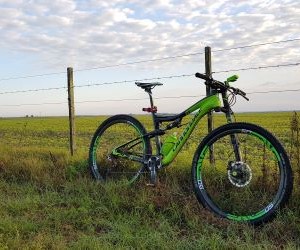Explore the best cycling and bike touring routes in Raleigh, from scenic greenways to wooded trails and smooth city rides—perfect for a vacation on two wheels.
WHAT ARE THE BEST HELMETS FOR MOUNTAIN BIKING?
Mountain biking pushes riders into technical terrain, steep descents, and unpredictable conditions where protection is non-negotiable. A good helmet isn’t just about safety—it’s about comfort, ventilation, and confidence on the trail. With so many options available, from lightweight half-shells to full-face designs, choosing the right one can feel overwhelming. This guide breaks down what makes a helmet effective, highlights different styles, and reviews practical tips for selecting the best helmet for your riding discipline.

Key features of MTB helmets
Every mountain bike helmet has one primary purpose: protecting your head during crashes. But modern designs go beyond impact absorption, integrating technologies that improve safety, comfort, and performance. Understanding the fundamentals helps you filter through options intelligently.
Safety certifications and impact tech
Look for helmets certified by standards such as CPSC, EN 1078, or ASTM. Many now include rotational impact protection systems like MIPS or WaveCel, designed to reduce brain injury risk from angled impacts. Dual-density foam and extended coverage also boost protection.
Fit and retention systems
A helmet is only effective if it fits properly. Adjustable retention systems like BOA dials or cradle harnesses ensure a snug fit without pressure points. Good helmets offer multiple shell sizes combined with fine-tuning dials for personalized comfort.
Ventilation and weight
Trail and enduro rides often last hours, making ventilation critical. Well-designed airflow channels reduce heat buildup while keeping weight low. Lighter helmets reduce neck fatigue, especially on long climbs or technical descents.
Certified for impact safety standards.
Include MIPS, WaveCel, or similar tech.
Offer dial-adjustable retention for secure fit.
Balance ventilation with lightweight design.
By focusing on these fundamentals, riders can narrow choices to helmets that deliver real-world safety and long-term comfort.
Different helmet styles for MTB
Mountain biking covers a wide spectrum of disciplines, from mellow cross-country to aggressive downhill. Helmet choice should align with your style, balancing protection and practicality.
Half-shell trail helmets
These are the most versatile MTB helmets, offering extended rear coverage compared to road helmets. Ideal for cross-country and trail riders, they balance weight, ventilation, and protection. Many include visors to block sun and debris.
Full-face helmets
Downhill and enduro riders benefit from full-face protection with chin bars. Modern versions use lightweight materials and better ventilation than older motocross-style helmets, making them manageable even for long descents.
Convertible helmets
Convertible helmets bridge the gap with removable chin bars. They allow riders to climb in half-shell mode and descend in full-face protection, making them popular for enduro racing where versatility is key.
Half-shell: Lightweight, versatile for trail riding.
Full-face: Maximum protection for downhill and jumps.
Convertible: Hybrid solution for enduro versatility.
XC race helmets: Minimalist, focused on weight savings.
Choosing the right style depends on where and how you ride. Riders tackling bike parks need different helmets than those logging long XC miles.
Top mountain bike helmets
With hundreds of options on the market, a few helmets consistently earn praise for balancing safety, comfort, and performance. Below are examples across categories, highlighting standout features riders should look for.
Giro Manifest Spherical
A premium half-shell helmet featuring Spherical Technology (MIPS integration), excellent ventilation, and a secure Roc Loc Trail retention system. Ideal for trail and all-mountain riders wanting top-tier safety and airflow.
Fox Proframe
One of the lightest full-face helmets on the market, the Fox Proframe combines downhill-level protection with high breathability. It’s a favorite among enduro racers who need confidence on descents without overheating on climbs.
Bell Super Air R
This convertible helmet offers removable chin bar flexibility, MIPS Spherical protection, and outstanding ventilation. It’s a strong choice for riders who want one helmet for varied terrain and disciplines.
Giro Manifest: High-end trail helmet with Spherical tech.
Fox Proframe: Lightweight full-face for enduro and downhill.
Bell Super Air R: Versatile convertible helmet option.
POC Kortal Race MIPS: Durable with extended coverage.
These models highlight innovation in impact protection, ventilation, and versatility. Riders should always try helmets on for fit before committing to a purchase, as comfort is highly individual.
YOU MAY ALSO BE INTERESTED






